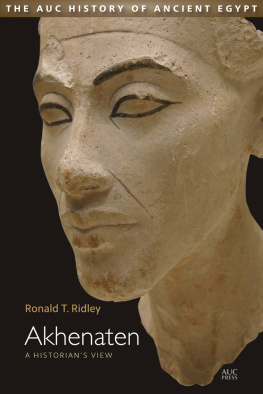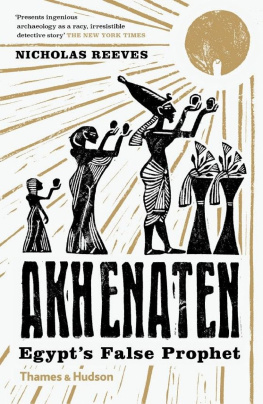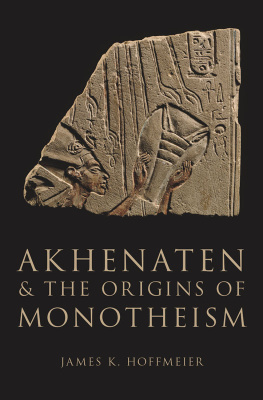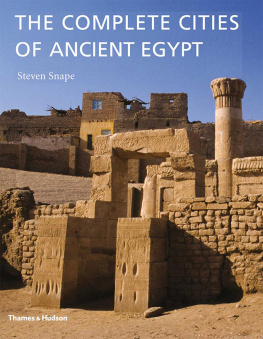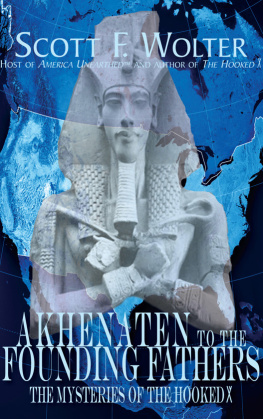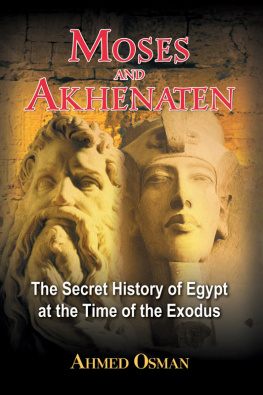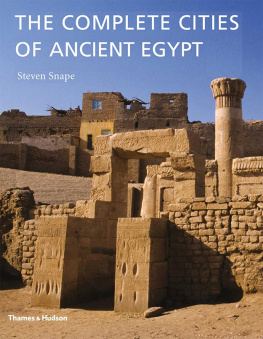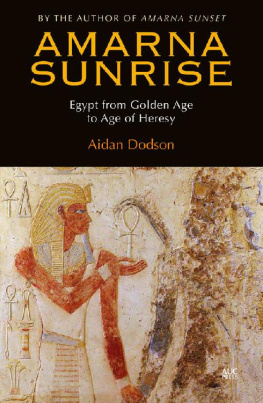Akhenaten
Akhenaten
A HISTORIANS VIEW
Ronald T. Ridley
The American University in Cairo Press
Cairo New York
This electronic edition published in 2019
The American University in Cairo Press
113 Sharia Kasr el Aini, Cairo, Egypt
420 Fifth Avenue, New York, NY 10018
www.aucpress.com
Copyright 2019 by Ronald T. Ridley
All rights reserved. No part of this publication may be reproduced, stored in a retrieval system, or transmitted in any form or by any means, electronic, mechanical, photocopying, recording, or otherwise, without the prior written permission of the publisher.
ISBN 978 977 416 793 5
eISBN 978 1 61797 944 6
Version 1
To the Memory of
Norman de Garis Davies (18651941), indefatigable recorder,
Cyril Aldred (19141991), inspiring biographer,
William Murnane (19452000), great Amarnan scholar, and
John Albert Wilson (18991976), my fist inspiration in Egyptology
Most of what is written about the momentous events in
the history of the Amarna Period in our secondary sources
is speculation
Geoffrey Martin, The Hidden.
Tombs of Memphis
Contents
T his is, I believe, the first book about Akhenaten written not by an archaeologist, a philologist, or an art historian, but by a historian. What that means should become clear as the text progresses.
I have tried to document each statement with evidence. That can come from an amazing array of sources: epigraphic, archaeological, artistic, or literary. I confess that nding them has often caused me great pains; for example, others can refer simply to a block from Hermopolis (there are thousands and thousands of them), or an object in the Louvre or in the Metropolitan (the same). They are identied here as exactly as possible.
Each chapter is subdivided with subheadings. In this way, I have tried to avoid a common feature of writing on Akhenaten: nothing is treated comprehensively in one place, but each topic is scattered throughout the text with multiple references. With my system, one should nd a substantial discussion of any topic in one place, with adequate signposting.
Illustrations are vital evidence. They will be found at the most important point where they are discussed, not in erratic order or bunched together at various points.
As a historian, I am not competent to deal with art history. There is no chapter as such on Amarnan art. And there is no chapter on the infamous problem of a coregency between Akhenaten and his father. After oceans of ink being spilled, that has most recently been nonchalantly consigned to the outdated matters/no longer of interest box.
There are two matters I should signal. First, I had hoped to present the essential primary sources drawn from both text and art directly in my own text, as historians like to do, but they are hidden in the endnotes. Second, I have given full names in the rst reference to each person in each chapter, but used only surnames for subsequent references in that chapter. On another matter of names, I have generally called Akhenaten and Tutankhamun by those names, rather than switching to and from Amenhotep IV and Tutankhaten, although I have, on occasion, highlighted a particular occurrence of a name where it is necessary for the purposes of the narrative.
My sincerest gratitude must be expressed to the original publishers of the wonderful illustrations without which such a subject would be incomprehensible, and who have so generously allowed them to be reproduced here.
There are three women without whom this book would never have been published: my best editor, my wife Therese; Ingrid Barker, who impeccably transformed typescript into a digital version; and Salima Ikram, the essence of kindness.
| Ashmolean | Ashmolean Museum, Oxford |
| Berlin | gyptisches Museum, Berlin |
| BM | British Museum, London |
| Brooklyn | Brooklyn Museum, New York |
| Cairo | Egyptian Museum, Cairo |
| EA | Amarna Letter number |
| Fitzwilliam | Fitzwilliam Museum, Cambridge |
| KV | Valley of the Kings tomb number |
| MFA | Museum of Fine Arts, Boston |
| MMA | Metropolitan Museum of Art, New York |
| Ny Carlsberg | Ny Carlsberg Glyptotek, Copenhagen |
| Petrie | Petrie Museum, University College London |
| San Diego | San Diego Museum of Man, San Diego |
| TA | Tell el-Amarna tomb number |
| TT | Theban tomb number |
| WV | estern Valley of the Kings tomb number |
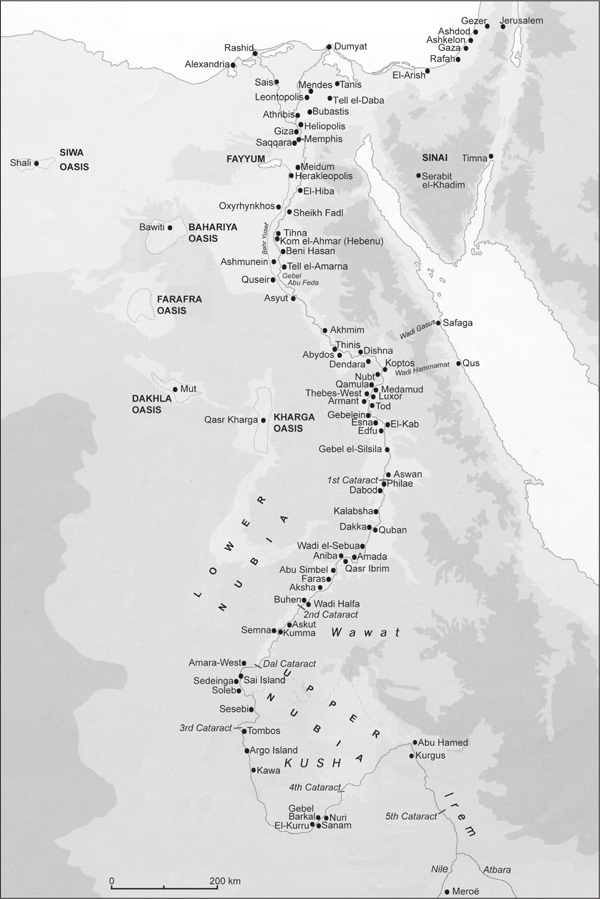
Map. 1. The Nile Valley.

Map. 2. Tell el-Amarna. The capital letters denote the boundary stelae of Akhet-Aten..

Map. 3. The Near East during the fourteenth century bc .
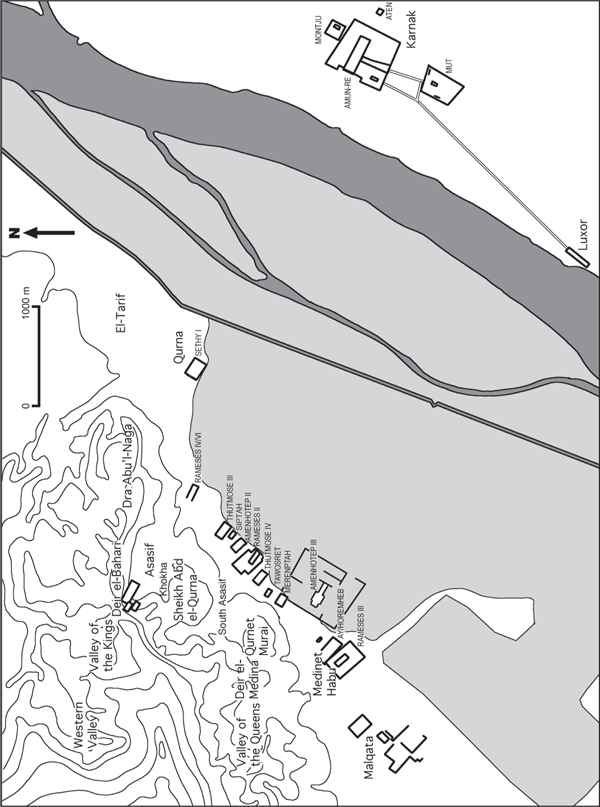
Map. 4. Thebes.
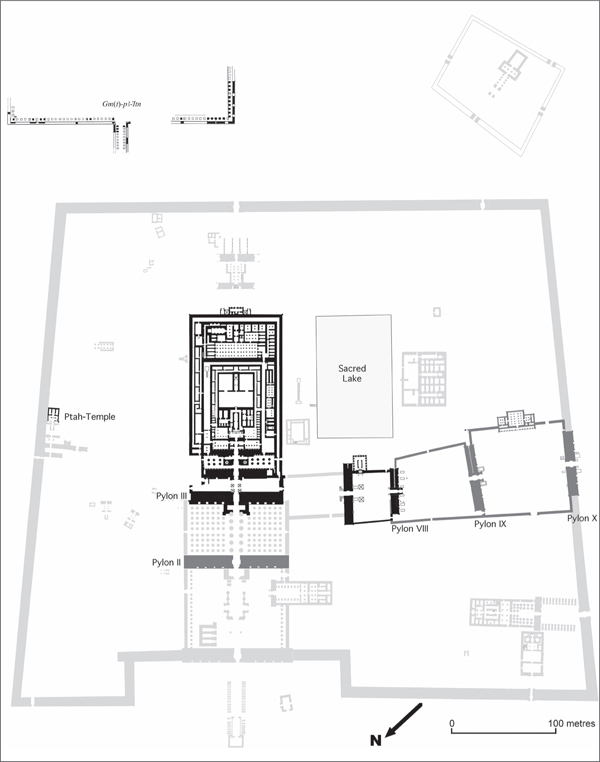
Map. 5. The temenos of Amun-Re at Karnak, highlighting the structures extant at the end of the Eighteenth Dynasty.
Akhenaten: Fashion,
Fantasy, and Fact |
For about one and a half centuries now, anyone interested in Egypt has been aware of a king either fascinating or alarming, depending on reactions. These extreme responses have arisen primarily because of his appearanceat least in some of his portraitsand his position in the religious history not only of Egypt, but also of the East. Modern reactions were pregured by those of his contemporaries, including those who tried to obliterate him from history, but his brief reign has given its name to what is now the best-known period in Egyptian history.
We begin with three generalizations, put forth by several authors:
Few sovereigns have been so pitifully mistreated by posterity as Amenhotep IV; it seems that modern historians have been bent on worsening the curses with which the Theban priests have burdened his memory. Most wish to see in him only a lofty fanatic, others charge him with madness, others again state that he was a simple eunuch.
Of all the personalities of Egyptian antiquity, Akhenaten and Nefertiti are undoubtedly the most famous. The royal couple of Amarna exercise such a fascination that they are now part of Western cultural mythology. Seemingly so close to us, they represent the image of the ideal couple, touching in their adversity, struggling against the established strength of a traditionalist society, and attempting to establish a religion of love in a selsh world. The companion of a mystical king with fragile health, the queen moves us by her delity and her constant presence next to her frail husband. And then, Nefertiti is so beautiful. This vision is real, but it is a reality of the contemporary world that is always ready to nd in the past the reection of its hopes and ideals.

